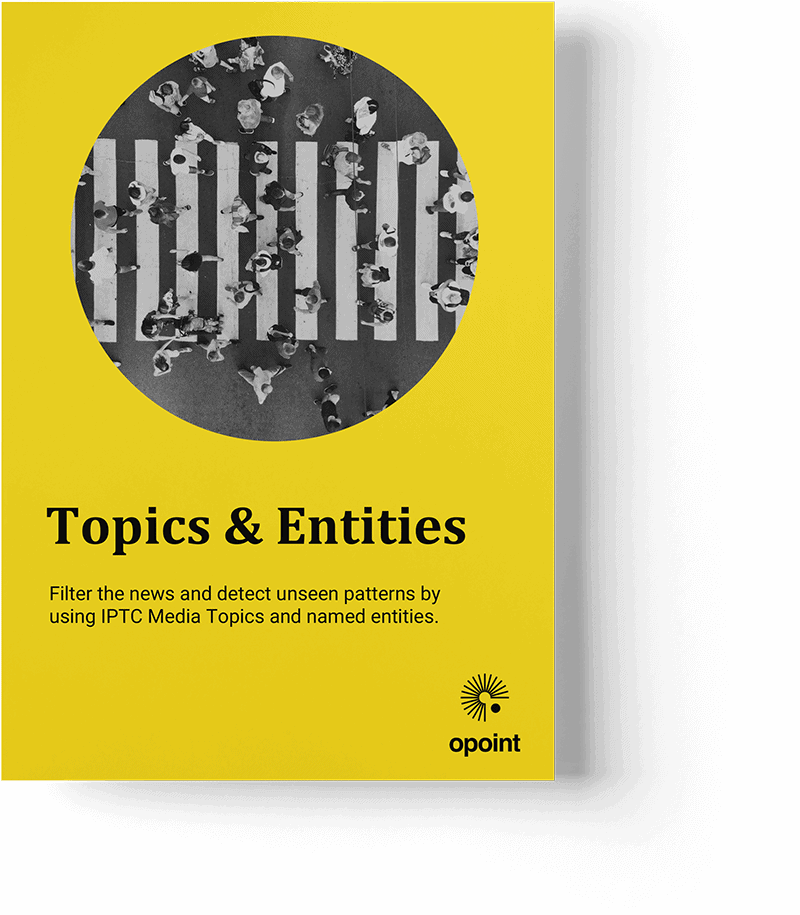Regulations are tightening, financial crime risks are evolving, and missing key information can be costly.
So how do you ensure you’re catching risks as they emerge—not after they’ve already made the front page?
The answer lies in real-time data and adverse media screening. Let’s dive in.
10 March 2025
In an era of rising regulatory scrutiny and global market volatility, business operations can buckle under the pressure to ensure regulatory compliance. Whether you’re in financial services or a multinational enterprise managing a wide range of partners, robust compliance requirements demand more than traditional annual or quarterly audits. For those aiming to meet specific regulations, from local data protection mandates to the General Data Protection Regulation (GDPR), real-time data has become an essential asset.
The Shifting Landscape of Compliance
Gone are the days when periodic check-ups were enough to meet regulatory obligations. Modern compliance requirements hinge on continuous monitoring. This is particularly relevant in financial services, where a single missed story about potential fraud or reputational risk can undermine an entire operation.
- Real-Time Data: Risk factors can change overnight. Missing critical updates, especially in local data streams, can lead to blind spots undermining financial reporting and regulatory compliance.
- Proactive Monitoring: Spotting irregularities as they arise allows you to contain threats before they morph into full-blown crises.
James Hannan, Opoints Risk Specialist, explains:
In an increasingly fractured regulatory environment, the onus is on compliance teams to cover as much of the threat landscape as possible. Simply put, if you’re a financial institution or business required to screen entities before engaging with them, can you really afford to miss critical information developing in the news?
Ensuring Regulatory Compliance Through Global Visibility
Local media often reveals early signs of litigation, controversies, or market structural changes long before these become mainstream headlines. Tapping into global data streams gives a panoramic view, which is vital for business operations that aim to comply with specific regulations across jurisdictions.
Capture the Big Picture
Gathering real-time intelligence on emerging risks is indispensable in everything from financial services to supply chain monitoring. An early tip-off from a local newspaper might be the difference between swift remediation and a compliance disaster.
- Regulatory Shifts: Staying abreast of compliance regulations helps businesses avoid costly penalties.
- Legal Controversies: Media reports about lawsuits or adverse media screening findings can impact supply chains, vendor relationships, and business operations.
- Market Disruptions: Political, social, or economic unrest can ripple across markets, affecting financial reporting and overall risk assessments.
James elaborates on the risks of missing these insights:
Negative news is repeatedly linked to reputational risk and prolonged damage to business operations. Yet, many companies still treat adverse media screening as an afterthought. In today’s environment, failing to monitor emerging risks can be just as dangerous as failing to act.
Real-Time Alerts for Emerging Risks
A story can break in a language you don’t speak—perhaps in a region housing critical suppliers. By the time it reaches English outlets, the damage may be done. Armed with real-time intelligence, you can adapt business operations promptly to ensure regulatory compliance and data security.
Data Integrity and Data Security: A Joint Priority
Businesses operating across multiple regions gather vast volumes of data captured from countless sources, including financial reporting and customer data. Maintaining data integrity in this environment is no small feat.
- Data Integrity: Ensures consistent, accurate records that withstand regulatory scrutiny. If your data is compromised, your entire compliance framework may be at risk.
- Data Security: Protecting sensitive data and personal information isn’t just an IT concern—it’s central to ensuring compliance with specific regulations.
James notes:
Every business is unique, and so are its compliance needs. If enhanced due diligence is required, especially across multiple jurisdictions, adverse media screening and real-time insights become non-negotiable.
Follow James on LinkedIn for more insights on compliance and risk management.
Machine Learning for Enhanced Compliance
Machine learning excels at spotting real-time anomalies when dealing with a wide range of data streams. This is particularly valuable in financial services, where quickly detecting fraud or regulatory compliance issues is paramount.
- Pattern Recognition: AI-driven models identify unusual behaviour faster than human teams.
- Adaptive Algorithms: ML tools refine themselves over time, improving compliance strategies.
Balancing Automation with Oversight
While automation is powerful, it requires human judgment to validate flagged risks. Auditability ensures compliance decisions remain transparent and defensible under specific regulations.
Strengthening Compliance Strategies with
Real-Time Feeds
Step 1: Identify High-Risk Areas
Each organisation’s compliance requirements vary. For example, you might need to monitor global news for potential bribery accusations or focus on environmental legislation in emerging markets.
Key Questions:
- Which regions pose the most significant regulatory risk?
- Are there industries with stricter compliance requirements?
Step 2: Integrate Real-Time Data Streams
Bolster your compliance posture by plugging into curated feeds from comprehensive sources.
- Automatic Filtering: Customise topics or geographies to avoid alert overload.
- Metadata Tagging: Helps compliance teams quickly locate high-risk news items.
Step 3: Prevent Information Overload
Global coverage can easily produce information overload. Strike a balance between completeness and practicality:
- Smart Dashboards: Prioritise urgent alerts.
- Regular Calibration: Refine your keyword filters and machine learning models so they reflect shifting compliance requirements and remove noise.
Handling Sensitive Data in Global Business Operations
Complying with specific regulations like GDPR requires respecting data privacy laws, even across borders. Data security is critical whether handling personal information in Europe or financial data in Asia.
- Privacy by Design: Embed encryption and security from the start.
- Ongoing Monitoring: Identify potential data breaches before they escalate.
Creating a Compliance Culture
The best technical solutions mean little if your workforce treats compliance as a formality. Encourage every employee to see the bigger picture—safeguarding sensitive data and maintaining data integrity is a collective effort, not just an IT chore.
The Power of Real-Time, Global Coverage
No matter how thorough your compliance strategies may be, you can’t act on what you don’t see. That’s why comprehensive data coverage is paramount.
+235,000 Sources in +150 Languages
Opoint covers over 220 jurisdictions, and its real-time feeds capture critical stories—whether they break in major English outlets or local, non-English publications. This helps you spot supply-chain disruptions, adverse media coverage, or evolving regulatory changes the moment they surface.
Enriched Metadata for Easy Filtering
Structured data and topic tags eliminate irrelevant content. Instead, you can focus on the precise geographies, industries, or risks that matter most to your organisation, streamlining data processing and saving valuable time.
Adverse Media Screening
By the time negative news hits mainstream channels, your competition may already be in damage-control mode. Opoint’s adverse media screening empowers you to detect red flags early so that you can stay ahead of potential reputational crises or compliance pitfalls.
Next Steps
Harnessing real-time data is key to fulfilling compliance requirements in an unpredictable world. Investing in adverse media screening, machine learning, and information security management enables compliance teams to:
✅ Stay Ahead of Risks – Early detection minimises damage.
✅ Automate Compliance Efforts – Reducing false positives and manual workload.
✅ Ensure Global Visibility – Non-English sources offer critical insights that English-only coverage misses.
Want to go deeper?
Stay Ahead with Your Free Compliance Playbook
Want to dive deeper? We’ve just released our comprehensive guide, Compliance: A Data-Driven Playbook, packed with practical strategies to elevate your compliance efforts.
Discover how to implement smarter monitoring practices, enhance risk detection, and ensure your compliance program is ready for whatever comes next.




